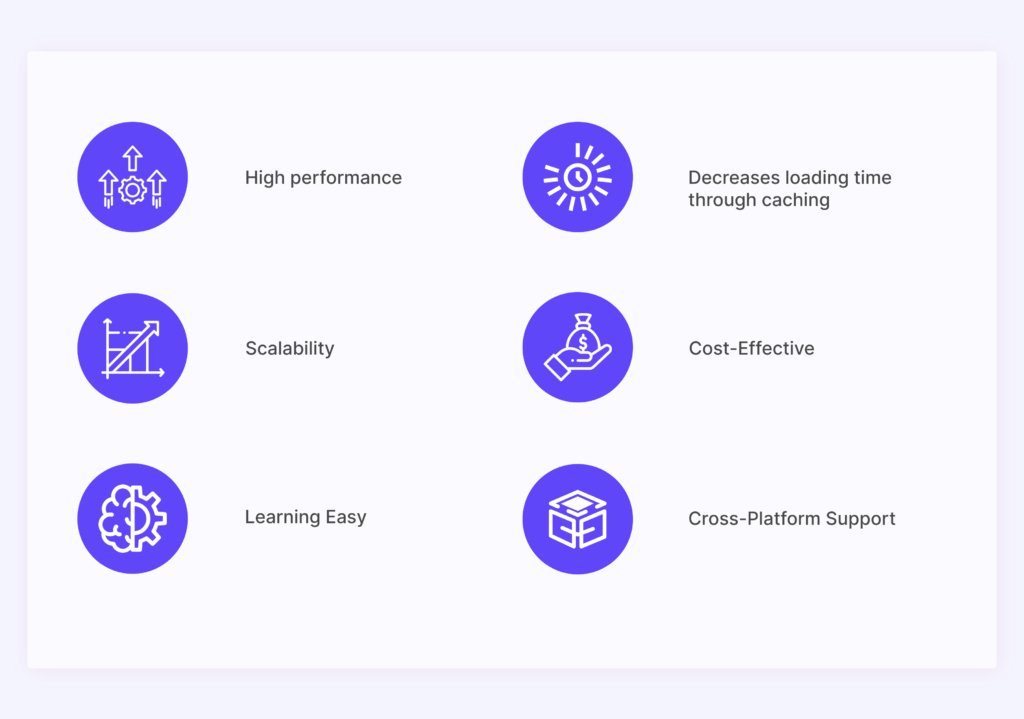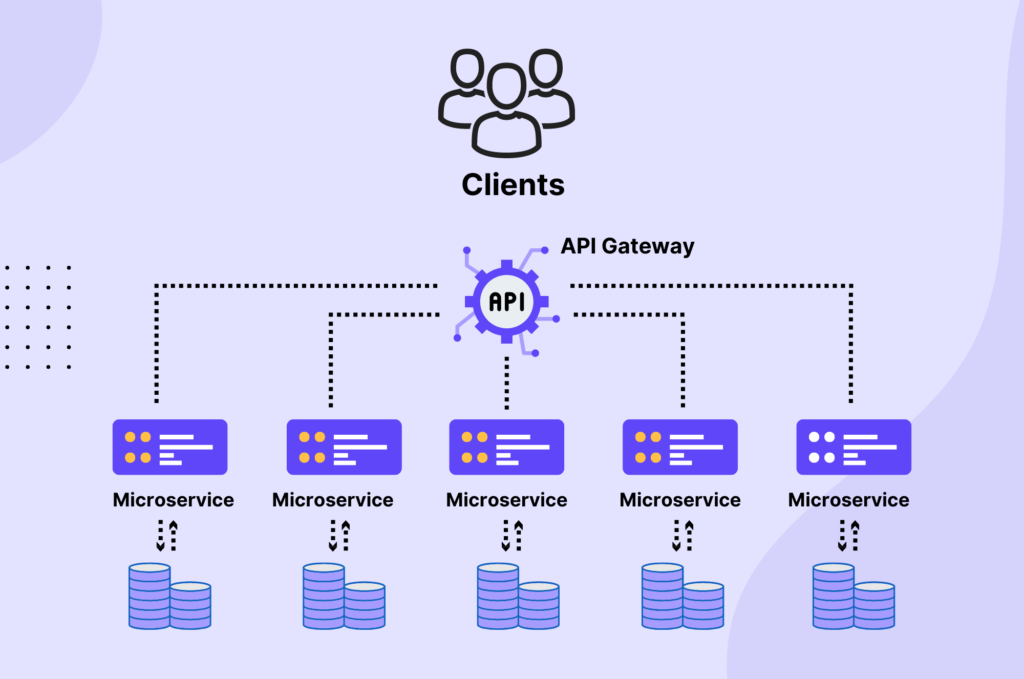Updated on February 12, 2025
About thirteen years after the launch of the first server-side JavaScript environment, Netscape’s LiveWire Pro Web, Ryan Dahl created Node.js. In the first edition, support was only given to Linux and Mac OS X. Dahl managed its development and maintenance, and Joyent later funded it.
Node.js use JavaScript and a set of modules that handle various core functionalities to create Web servers and networking tools. There are modules for networking (DNS, HTTP, TCP, TLS/SSL, or UDP), binary data (buffers), data streams, cryptography processes, and other fundamental operations. The modules of Node.js make use of an API that makes writing server applications less difficult.
In this Blog, we’ll discover What node.js is, Why you choose Node.js, How it works, Top 9 Node.js development trends and insights in 2025.
What is Node.js?
Node.js is an open-source, cross-platform server environment that works with Windows, Linux, Unix, macOS, and other operating systems. Node.JS uses the V8 JavaScript Engine, a backend runtime environment for JavaScript, to execute JavaScript code outside a web browser.
To achieve excellent speed and application scalability, it uses a single-threaded event loop and an event-driven, non-blocking I/O strategy. Because Node.js is based on the JavaScript programming language, it is simple for developers to write an application’s front and back end in the same language.
Node.js applications frequently make use of JavaScript-based Express.js and MongoDB. Express.js is the middleware for Node.js apps, whereas MongoDB is a NoSQL database based on documents.
On the server, Node.js can:
- Create, Open, Read, Write, Delete, and Close files.
- Create dynamic page content. Gather data from forms.
- Change, add, or remove data from your database.
Why Should You Choose the Node.js Framework?
What unique qualities do these frameworks have that make them stand out from one another? Additionally, Node.js frameworks are convenient for software engineers and are minimalist.
The main benefits Node.JS offers its users are listed below to aid your decision-making.

1. High performance
Web apps greatly benefit from Node.js’s multitasking functionality. Its single-threaded, event-driven architecture efficiently responds to numerous queries without taxing the RAM. It also enables code to be executed at a rate that indirectly influences the speed of the application as a whole, thanks to its event-loop and non-blocking I/O operations.
2. Scalability
Developers can quickly grow applications in both horizontal and vertical orientations thanks to Node.js, which is one of its benefits. Adding more nodes to the current system can scale the applications horizontally.
3. Easy Learning
As one of the most widely used programming languages, JavaScript is familiar to most front-end developers.
They will find it much simpler to begin using Node.js on the backend. Node.js is easier to understand and uses less time to work with.
4. Decreases loading time through caching
It is simple for developers to reduce task workload and code re-execution using the Node.js Caching module. It is one of the main benefits of using node.js.
As a result, each time the web application is accessed, its initial module is cached in the in-app memory. Online users can quickly browse websites without having to wait around.
5. Cost-Effective
Programmers can easily create server-side JavaScript and front-end JavaScript codes using Node.js. The fact that node.js does away with the need for two resource teams results in significant time, financial, and energy savings for overall project development.
6. Cross-Platform Support
Unlike Java, which needs a virtual machine or browser plug-in, Node runs on Windows, Linux, and Mac OS X using the V8 engine in Google Chrome to execute JavaScript code natively on each platform.
Automate customer queries, streamline support workflows, and boost efficiency with AI-driven email ticketing from Kommunicate!How Node.js works
The event-driven architecture of Node.JS essentially consists of three steps:
- Events are released into the event queue,
- The event loop takes the newly created events.
- The calling of callbacks.
Even though it only supports a single thread, it can manage a thread pool to handle both blocking and non-blocking I/O requests.
Top 9 Node.js Development Trends and Insights in 2025
As listed below, Node.js has several frameworks that are anticipated to be instrumental in advancing the leading web development industry in 2025. I’d like to discuss some of the most important Node.js development trends that nobody should overlook as an open-source JavaScript runtime environment.
#1. GraphQL Deployment in Node.js apps
Through a single common endpoint, clients can access their databases using the query language GraphQL.
GraphQL can be used to create applications that need to manage sizable amounts of data from various sources as well as straightforward APIs. As a result, using GraphQL to develop Node.js applications is much quicker and more effective.
GraphQL’s acceptance and demand have increased dramatically. This database operates at an unmatched speed and is well-known to developers.
#2. Internet of Things (IoT)
IoT is here to stay, and creating your next connected device with Node.js is a great option.
The growing number of devices connected to the Internet is called the “Internet of Things” (IoT). These gadgets could be anything from wearable technology to sensors that keep an eye on your health to home appliances.
The ability of these gadgets to connect and exchange data over a network is what gives them their power.

Through the existing network infrastructure, objects can be remotely sensed or controlled thanks to the Internet of Things. In addition to lowering the need for human intervention, it opens up possibilities for more direct integration of the physical world into computer-based systems, improving efficiency, accuracy, and economic benefit.
#3. Microservice
The use of microservices in software architecture has grown in popularity. Small, independent services that each run in their process and communicate using simple protocols like HTTP resource API make up a microservices architecture.
Numerous benefits of a microservices architecture include
- Quick development
- Continuous delivery
- Deployment
- Scalability
- Resilience.
Developers can concentrate on one service at a time without being concerned about how their work will affect other services.
The microservices architecture encourages the use of compact services that can be created with Node.js technology and are centered around functionalities for businesses.

Developers can create their microservices using Node.js more efficiently, thanks to the availability of several microservices frameworks like Express and Nest.
#4. Real-Time Apps
In many industries, real-time applications have replaced the old standards. Real-time updates on a company’s website or mobile application help businesses increase customer engagement. They applications let users interact with the programs in real-time, from gaming to retail.
Real-time applications are preferred by expert NodeJS developers because the NodeJS framework enables them to create scalable, quick, and multi-request-capable web applications. Many companies are looking to hire backend developers skilled in modern technologies to enhance their digital platforms.
According to the Grand view research report, between 2020 and 2027, the market for global web real-time communication will grow by 43.4%. We anticipate that more businesses will begin using NodeJS as their primary programming language due to the rising demand for real-time apps.
There have been many real-time applications, such as Apps for:
- Online Gaming
- Video conferencing
- Instant messaging
- E-commerce transaction
- Online Gaming
- Document Sharing
- Voice Over Internet Protocol
#5. Serverless Architecture Development
Serverless architecture is a recent and popular trend in the market for creating and deploying applications. This cutting-edge method frees developers from managing servers, databases, or any other infrastructure, allowing them to concentrate solely on creating their applications.
Many top companies, including Amazon Web Services (AWS), Google Cloud Platform (GCP), and Microsoft Azure, have already adopted serverless architectures, offering pre-built solutions for developers looking to build applications without having to worry about managing infrastructure.
If you want to learn more about serverless architectures and deepen your understanding, you can explore online certification exams like AZ-104. In fact, there are resources like AZ-104 Dumps that provide valuable insights into serverless computing and its applications.
An architecture with no servers has many advantages. Here are a few examples:
- Set business logic first.
Developers can spend more time working on their core business logic and enhancing code quality because they don’t have to worry about managing infrastructure. This frees them up from having to maintain servers and troubleshoot load-balancing problems.
- Rapid deployment
Serverless architecture is fast, this much everyone knows. Because there is no infrastructure construction to delay you, you can deploy apps quickly within a few hours. Scalability is also made easier by quicker deployments.
- Highly scalable
Serverless architectures are very scalable because no upfront resource provisioning is necessary. Without making any complicated changes, they can automatically adapt to shifts in demand for your application.
#6. MEAN & MERN Stack
Because the MEAN stack combines MongoDB, Node.js, Express.js, and AngularJS, it is a popular web development solution that startups and large organizations use. Businesses are looking to hire MEAN developers. Expert MERN stack developers favor MEAN because of its simplicity and adaptability.
MongoDB, Express, React, and NodeJS are collectively known as MERN. Similar to MEAN, but once you add with React or AngularJS to this mix , makes this stack perfect for front-end development. Due to their simplicity and capacity to construct complex applications with everything built into one package, the tech community really loves both stacks.
#7. Cloud Computing
Internet-based cloud computing delivers data and shared computing resources on demand to computers and other devices. Like a public utility, cloud computing relies on resource sharing to achieve coherence and scale.
Cloud computing is a logical progression from the mainframe-based computing, where all computation takes place inside the massive physical housing of the mainframe.
Instead of purchasing hardware or software, users can access applications, files, and services via the Internet thanks to cloud computing. This enables companies to forgo costly capital investments and concentrate instead on business growth.

NodeJS is becoming more prevalent in cloud computing solutions like AWS Lambda or Azure Functions as more businesses turn to the cloud for its efficiency and cost-effectiveness.
#8. DevOps
DevOps practices prioritize collaboration and communication among software developers, IT operations specialists. Its objective is to accelerate organizations’ delivery of high-quality goods and services by streamlining the software development and deployment process.
Automation is essential in the DevOps environment, and Node.js is a good fit for this strategy. It offers a compact and adaptable framework for building scalable, cloud-based applications that are simple to automate with the help of programs like Docker, Ansible, and Jenkins.
Node.js’s capacity to promote collaboration in a DevOps setting is one of its main advantages. Developers can use Node.js to create code that runs on both the client and server sides of an application, synchronizing them simultaneously with JavaScript code on both sides.
#9. Fast And Flexible Apps Development Using Node.js
Node.js is a powerful tool for developers because it enables them to create projects that are quick, scalable, and adaptable. The asynchronous nature of Node.js means developers can manage multiple tasks concurrently without affecting any functions’ effectiveness or progress. This is one of the most recent developments in Node.js development and significantly contributes to the multitasking era.
Without altering the app framework as a whole, Node.js enables app developers to make significant changes to their apps. This makes it simpler to expand their audience and implement significant application updates.
Wrapping It Up
As you can see, the popularity of Node.js has increased dramatically in recent years due to its adaptability and efficiency. App develops can work wonders with technologies like these.
As a result, many companies are now developing platforms or apps with Node.js, showcasing the platform’s huge stability and growth. Node.js may also be used to provide real-time functionality and streamline process databases. Given these most recent developments and contributions, Node.Js has a bright future.
At Kommunicate, we envision a world-beating customer support solution to empower the new era of customer support. We would love to have you on board to have a first-hand experience of Kommunicate. You can signup here and start delighting your customers right away.





